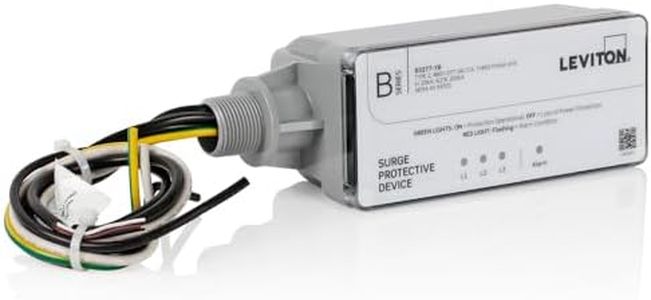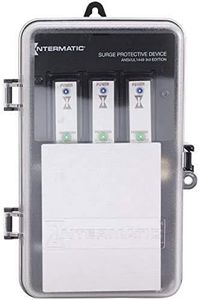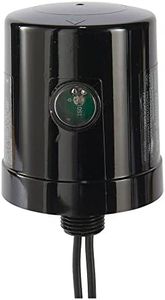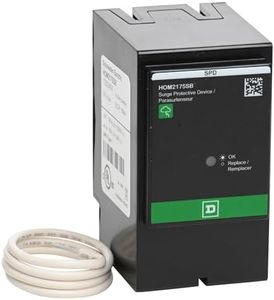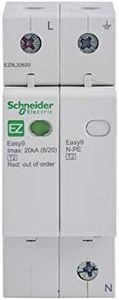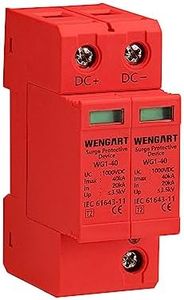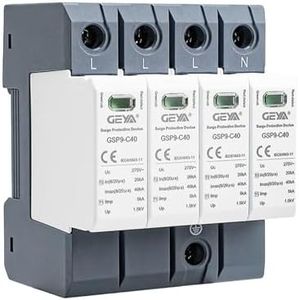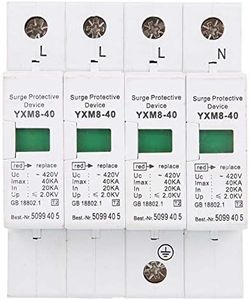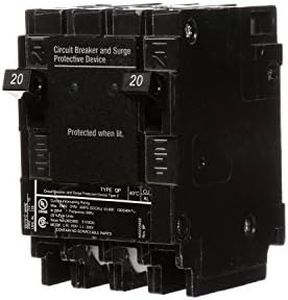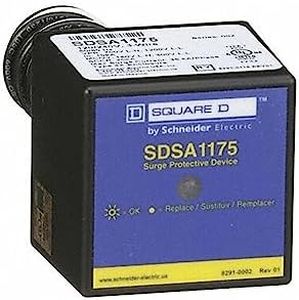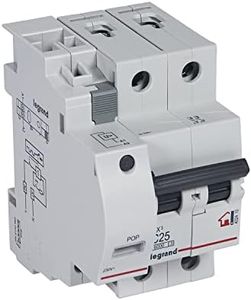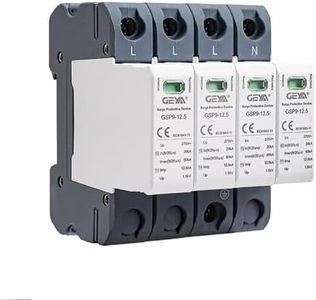We Use CookiesWe use cookies to enhance the security, performance,
functionality and for analytical and promotional activities. By continuing to browse this site you
are agreeing to our privacy policy
10 Best Whole House Surge Protectors
From leading brands and best sellers available on the web.Buying Guide for the Best Whole House Surge Protectors
Choosing a whole-house surge protector is about keeping your home’s electrical system and all plugged-in devices safe from unexpected voltage spikes. These spikes can be caused by lightning, electric grid issues, or even large appliances cycling on and off. A whole-house surge protector is installed at your main electrical panel, stopping surges before they can travel through your wiring. When shopping, you need to match protection level and features to the size and setup of your home, and think about the types of devices you need to protect.Surge Protection Rating (kA or kAmps)This tells you how much surge current the device can safely divert or handle before it fails. It’s measured in kiloamps (kA). Higher ratings mean the protector can absorb bigger surges, which is important if you live in areas prone to frequent lightning or power fluctuations. Common ratings are 20kA, 40kA, or higher. For basic protection in a typical home, a lower range suffices, but larger homes or places with expensive electronics may benefit from a model with higher kA ratings.
Clamping VoltageClamping voltage is the voltage level at which the surge protector starts to block or divert electricity. Lower clamping voltages offer better protection for sensitive devices since the surge protector will respond to smaller surges. Typical clamping voltages are 330V, 400V, or 600V. If your home contains a lot of sensitive electronics or you just want greater peace of mind, choose a protector with a lower clamping voltage.
UL 1449 CertificationUL 1449 is a safety standard for surge protection devices. Certification means the product has undergone rigorous testing for safety and effectiveness. Always look for a whole-house surge protector with UL 1449 listed on the label, as it’s a sign of quality and reliability, ensuring you and your home are properly protected.
Number of Modes of ProtectionModes of protection refer to how many paths a surge can travel through and still be stopped. The most secure surge protectors guard against surges on all combinations: line-to-neutral, line-to-ground, and neutral-to-ground. The more modes it covers, the more comprehensive protection you get, which is vital if you want strong coverage throughout your house.
Response TimeResponse time describes how quickly the device reacts to a surge. Faster response times mean your electronics are exposed to harmful voltages for less time. Most modern protectors work in nanoseconds, so look for models advertising a fast (less than 1 nanosecond) response to give your devices the best defense.
Installation TypeWhole-house surge protectors can be plug-in, snap-in, or hardwired into your breaker panel. Hardwired models are the most common and are typically installed by an electrician. The right type for you depends on your comfort with installing electrical devices and your home’s existing layout. If you’re not comfortable with electrical work, plan for professional installation.
Indicator Lights or AlarmsIndicator lights or alarms let you know the status of your surge protector—if it’s working or if it needs to be replaced after a big surge. This is especially helpful so you don’t have to guess if your system is still protected. If you want a trouble-free experience, pick a model with clear, easy-to-read indicators.

